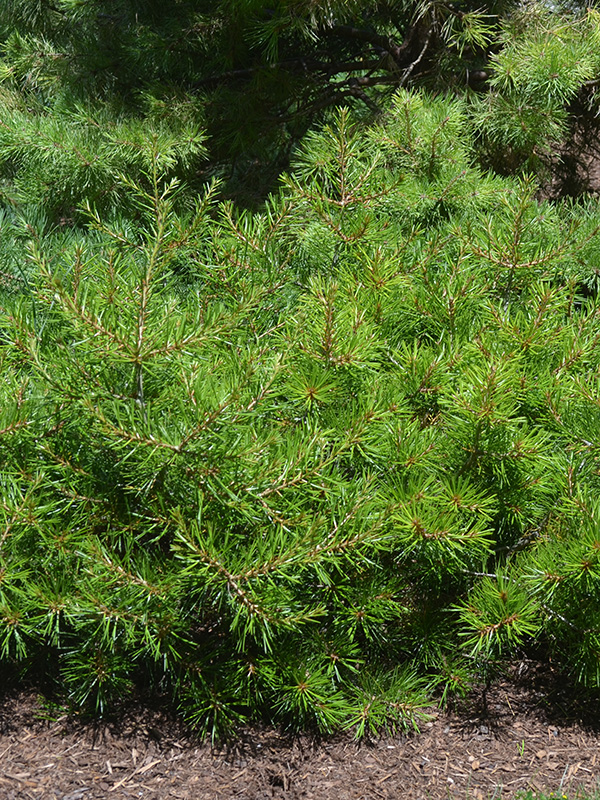
Woody > Pinus > Pinus bungeana > Pinus bungeana
Pinus bungeana
Lacebark Pine
Origin: Northwest and Central China introduced into cultivation in North America in 1846; cultivated in temple gardens in its native region.
Mike's
Opinion


"
A beautiful specimen tree with exfoliating bark as its key feature. The mosaic of green, white and brown bark can be showcased by removing the lower branches. Has been used for bonsai and would be lovely in a woodland garden.
Michael Pascoe, NDP., ODH., CLT., MSc. (Plant Conservation)
"
| Family |
| Pinaceae |
| Genus |
| Pinus |
| Species |
| bungeana |
| Category |
| Woody |
| Type |
| Tree (evergreen) |
| Pronunciation |
| USDA Hardiness Zone |
| 4 - 8 |
| Canadian Hardiness Zone |
| 2a - 8a |
| RHS Hardiness Zone |
| H4 - H7 |
| Temperature (°C) |
| -35 - (-7) |
| Temperature (°F) |
| -30 - 20 |
| Height |
| 9 - 15 m |
| Spread |
| 6 - 10 m |
Photographs
Description and Growing Information
Flowering Period
| General Description |
| Picturesque, multi-stemmed upright, oval tree. As it ages it develops a flattened canopy. |
| Landscape |
| Specimen for large areas; has been underutilized and would make excellent substitutes for species such as Pinus strobus or Pinus sylvestris. |
| Cultivation |
| Prefers well-drained soil, full sun; cut or pinch back new candles when finished growing, heavy snow/ ice can inflict damage. |
| Shape |
| Pyramidal to rounded and often multi stemmed, becoming flat topped as it ages. |
| Growth |
| Slow |
| ID Characteristic |
| Colourful, peeling bark; needles in 3’s are very stiff and rigid and sharp to the touch, multi-trunked. |
| Pests |
| Nothing notable (likely due to rareness). |
| Habitat |
| Mud and sandstone shales; often found in limestone. |
| Bark/Stem Description |
| Peeling layers of brown, white and green patches fading to chalky white. |
| Flower/Leaf Bud Description |
| Globular bottom that is tan brown which tapers to a point of dark brown. |
| Leaf Description |
| 3 needles, stiff, up to 10 cm long, sharp-pointed, finely toothed margins, sharp to the touch. |
| Flower Description |
| Inconspicuous, monoecious, non-ornamental; males are cylindrical, yellowish in clusters and females are yellow-green. |
| Fruit Description |
| Yellow brown cones, up to 7 cm long and 5 cm wide, terminal or lateral; subsessile, ovoid. |
| Colour Description |
| Lustrous medium to dark green; stem is greyish green, shining and glabrous. |
| Texture Description |
| Medium to thick density. |
| Notable Specimens |
| Niagara Parks Botanical Gardens, Niagara Falls, Ontario, Canada. The United States National Arboretum, Washington, District of Columbia, United States of America. |
| Propagation |
| Seed in individual pots in cold frame with short stratification period or grafting; will only graft successfully on a 5 needle pine. |
